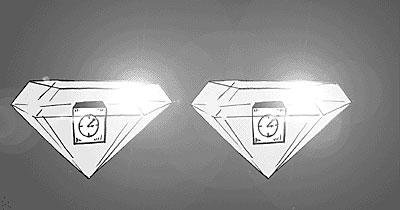


|

Illustration by Arnie Bermudez
|
|
Arizona Daily Wildcat
Thursday, September 16, 2004
Print this
Things you always never wanted to know
Natural gas has no smell. The odor is artificially added so that people will be able to identify leaks and take measures to stop them.
There is 1 mile of railroad track in Belgium for every 1.5 square miles of land.
If one were to capture and bottle a comet's 10,000-mile vapor trail, the amount of vapor actually present in the bottle would take up less than 1 cubic inch of space.
Deimos, one of the two Martian moons, rises and sets twice a day.
The area sold by France to the United States in the Louisiana Purchase was first offered to England, who refused it. The price paid by the United States for the land, some 100 million acres, averaged out to four cents an acre.
The weasel and the ermine are the same animal. This mammal's coat changes with the seasons - in its white winter coat it is known as an ermine; in its brown coat it is a weasel.
The Italian Renaissance painter Fra Filippo Lippi (1406-1469), while chaplain of the Convent of Santa Margherita in Prato, ran off with Lucrezia Buti, one of the young nuns. Lucrezia later bore Fra Filippo's son, Filippino Lippi (1457-1504), who himself became a famous painter. Fra Filippo is said to have used his abducted nun as the model for all the Madonnas he painted.
It is possible for a fetus in the womb to get hiccups.
A bird eye sees everything at once in total focus. Whereas the human eye is globular and must adjust to varying distances, the bird's eye is flat and can take in everything at once in a single glance.
The lighthouse in Creach d'Ouessant on the coast of Brittany in France gives out a light equal to that of 500 million candles. It would take 6,253,000 flashlights to make a light that bright.
The story of the little Dutch boy who placed his finger in a dike to save a town from a flood is an American invention. It was never heard of in Holland before the 20th century.
Catgut strings are not made from catgut, but from sheep intestines.
In the 18th century, the French Comte d'Artois owned a set of diamonds, each of which had a miniature clock encased inside it.
Write a Letter to the Editor
|
|

|
